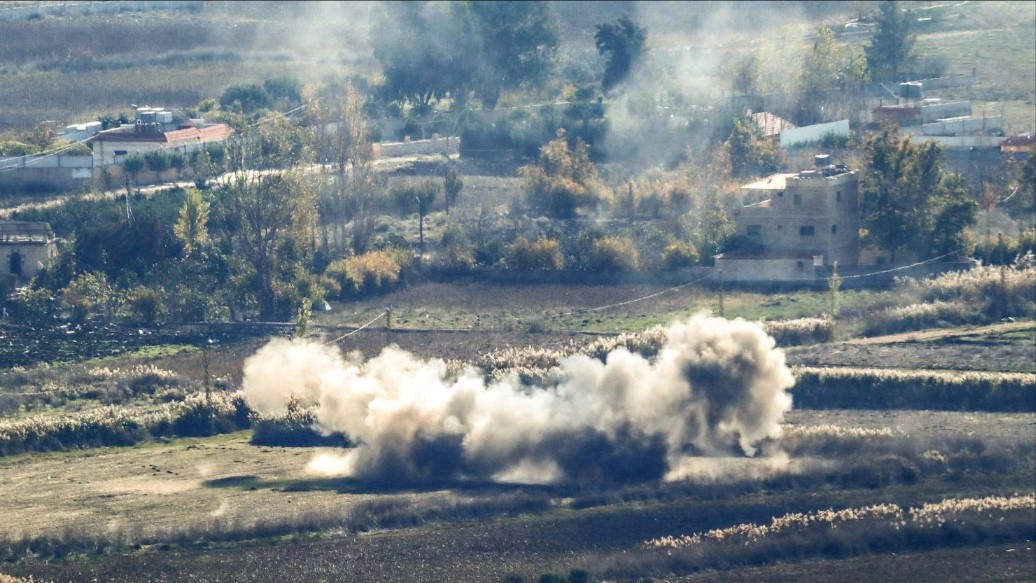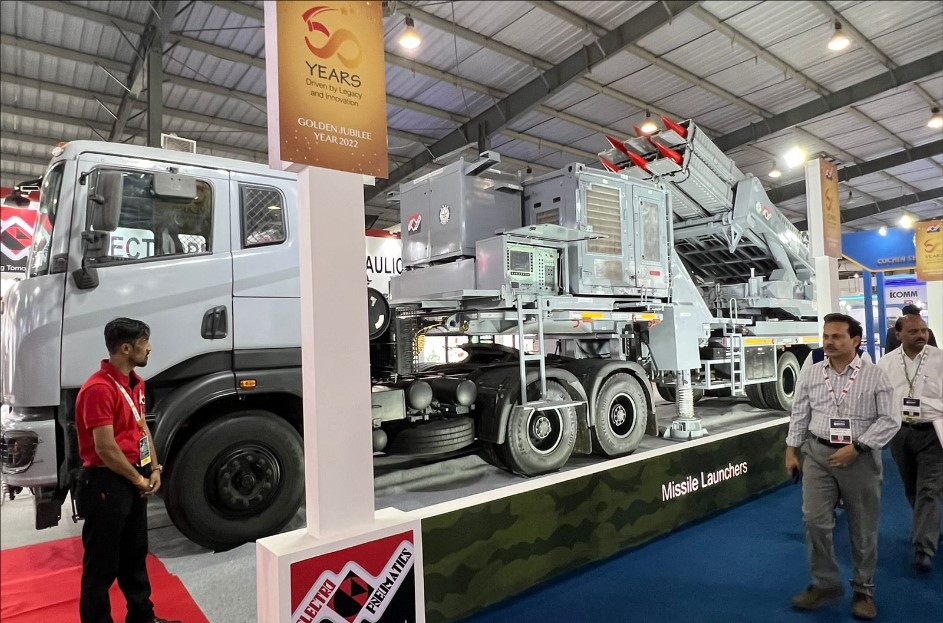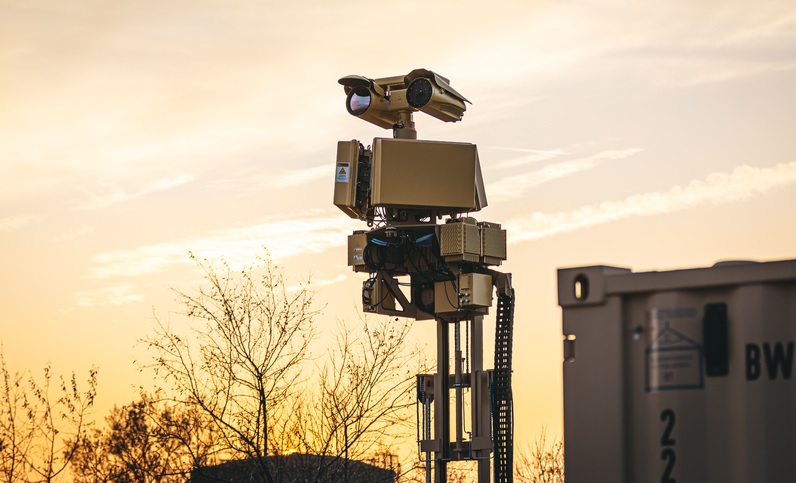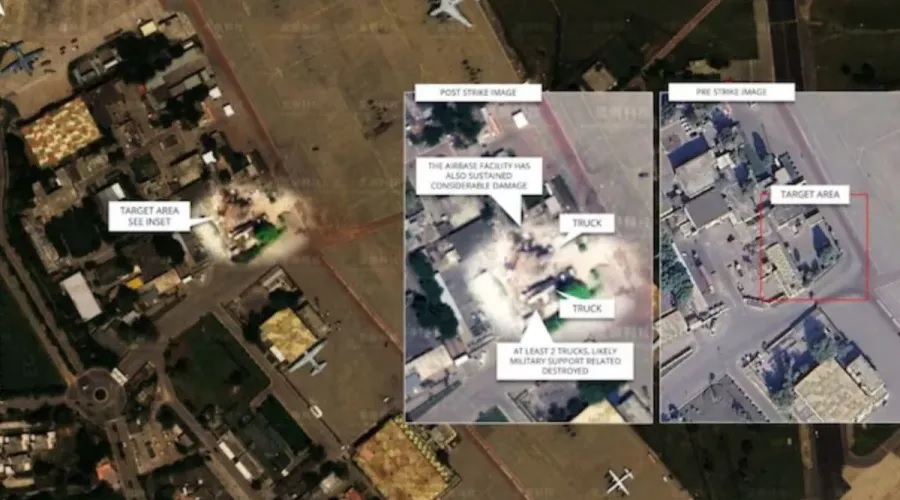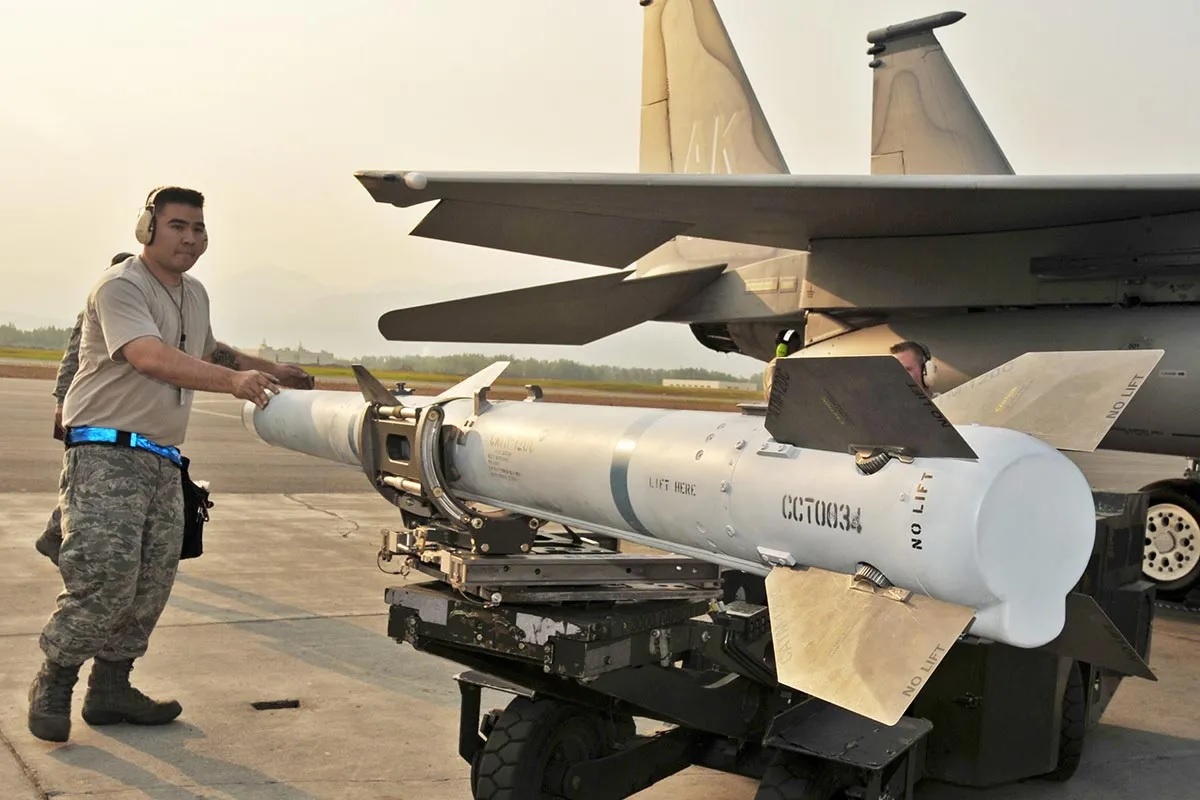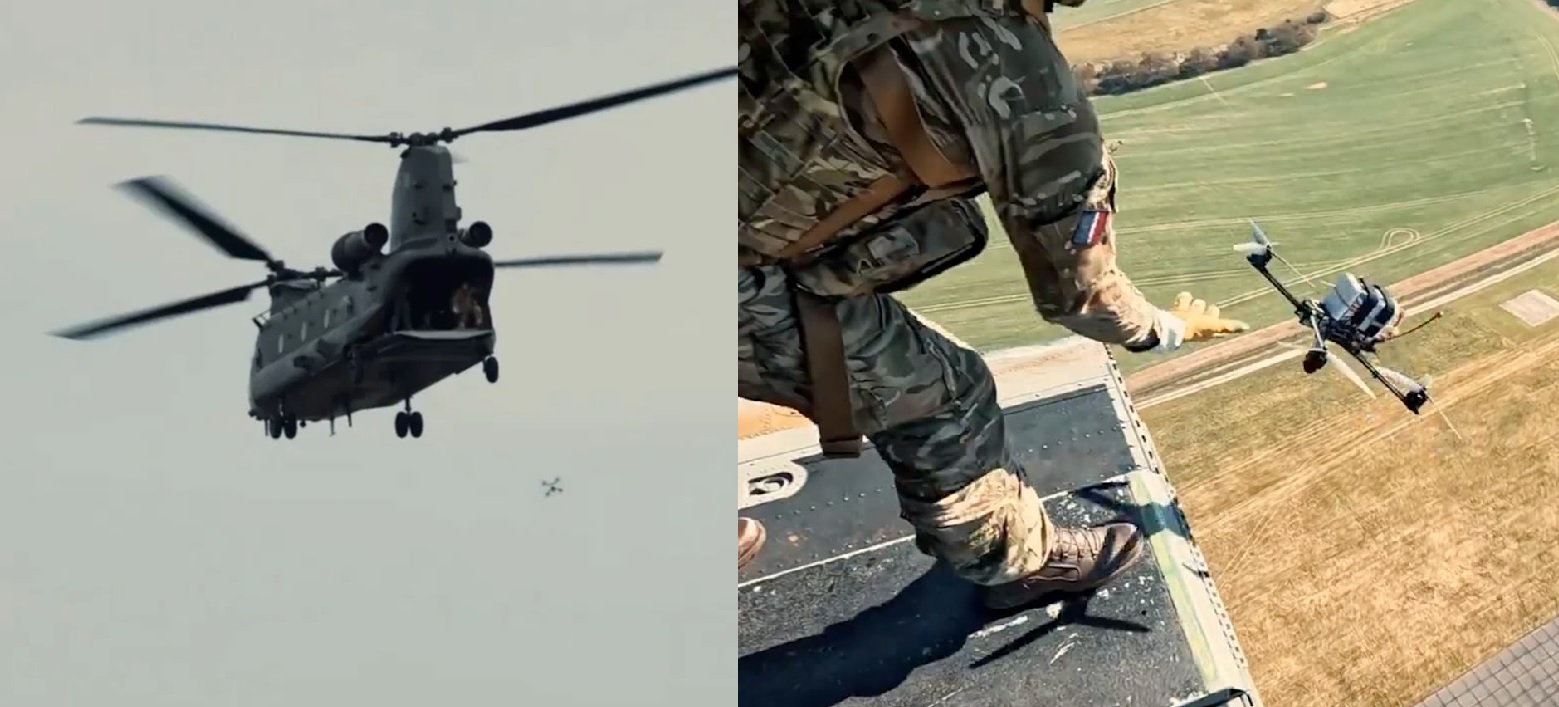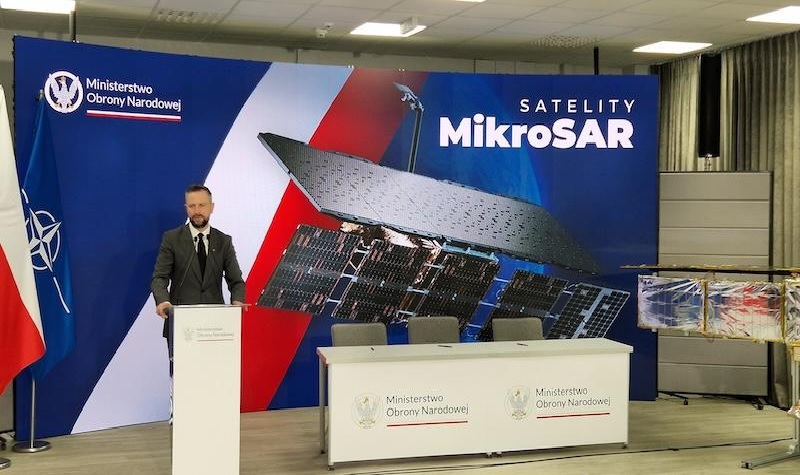India
In a major revelation, former Pakistani Air Marshal Masood Akhtar has confirmed that a key Airborne Warning and Control System (AWACS) aircraft was destroyed during a series of precision missile strikes carried out by India on May 9-10. The operation, known as Operation Sindoor, was launched by India in response to the deadly April 22 terror attack in Pahalgam and subsequent Pakistani drone strikes targeting Indian civilian areas. AWACS Destroyed at Bholari Airbase Speaking in a video interview, Air Marshal Akhtar detailed how the Indian military launched multiple BrahMos missiles, which ultimately struck the Bholari airbase, located near Islamabad. According to him, four missiles were launched in succession. While Pakistani pilots tried to scramble and secure their aircraft, the relentless missile barrage proved too much. “The fourth one hit the hangar at Bholari airbase, where one of our AWACS was standing. It was damaged,” Akhtar admitted, underlining the severity of the attack. AWACS aircraft are the eyes and ears of any modern air force. Equipped with powerful radar and communication systems, they play a critical role in detecting enemy aircraft, coordinating air missions, and guiding interceptors in real time. The loss of such an asset is a major strategic setback for Pakistan. India’s Coordinated Precision Strikes India’s missile campaign was not limited to one location. According to official statements, Indian forces struck 11 key military installations across Pakistan within a span of just three hours. These included bases at Rafiqui, Chaklala, Rahim Yar Khan, Sukkur, Sialkot, Chunian, Pasrur, Murid, Skardu, Jacobabad, and Bholari. Satellite imagery released afterward confirmed extensive damage to hangars, radar systems, and ammunition storage sites. This marked the first instance of successful strikes on airbases of a nuclear-armed country. Air Marshal AK Bharti of India noted, “We could have targeted more assets, but we chose to send a message—hit hard, but with restraint to avoid full-scale escalation.” One of the more high-profile strikes also destroyed a Lashkar-e-Taiba command center in Muridke—showcasing India’s precision in identifying and eliminating terror infrastructure. Chinese Systems Fail to Protect Pakistan Pakistan’s air defences, largely supplied by China, failed to intercept any of the incoming Indian missiles. Despite possessing HQ-9 air defence systems and advanced Chinese PL-15 missiles, none of these systems were able to prevent the strikes. The J-10C fighter jets, also of Chinese origin, failed to scramble in time or effectively counter the threat. This operational failure has sparked renewed doubts about the effectiveness of Chinese military hardware. It is not the first time such concerns have emerged. In 2022, the Pakistan Navy faced significant issues with its Chinese-made F-22P frigates. The vessels, which were expected to bolster naval capability, suffered from malfunctioning radar systems and underperforming engines. The lack of adequate maintenance support and the recurring nature of faults in Chinese defence systems have created growing anxiety within the Pakistani military establishment. Economic Pressure Driving Pakistan’s Military Choices Pakistan’s increasing dependence on Chinese military hardware is largely driven by its strained economy. With limited access to Western defence markets and a constant need to upgrade ageing systems, Pakistan has turned to China for more affordable options. Chinese defence deals often come with generous loans, flexible payment terms, and political alignment. However, this shift has come at a cost. Multiple reports, including a past study by the RAND Corporation, have pointed out the recurring faults in Chinese arms supplied to nations like Myanmar, Nigeria, and even Venezuela. These countries faced delays, technical failures, and costly overhauls—patterns now seen in Pakistan as well. A Message Delivered with Precision India’s Operation Sindoor was not just a military retaliation—it was a calibrated strategic message. The destruction of the AWACS aircraft and other military installations exposed Pakistan’s vulnerabilities and highlighted India’s precision-strike capability. It also signaled a shift in India’s strategic posture: one of decisiveness, deterrence, and control. As Air Marshal Bharti summed it up, “We could have destroyed more, but we chose restraint. That’s real power.” Meanwhile, the Pakistani Air Force’s failure to protect its critical assets, despite heavy investments in Chinese systems, may trigger a reassessment of its military procurement strategy—and how much it can really rely on its allies in times of crisis.
Read More → Posted on 2025-05-16 15:29:16World
In May 2025, a significant escalation unfolded between India and Pakistan, marked by a large-scale drone offensive that brought Turkey's covert involvement into sharp focus. The operation, known as Operation Sindoor, revealed the depth of military collaboration between Turkey and Pakistan, raising serious concerns about regional stability and international norms. A Coordinated Drone Assault On the nights of May 7 and 8, Pakistan launched an unprecedented aerial offensive against India, deploying approximately 300 to 400 drones across 36 locations along the western border, from Leh in Ladakh to Sir Creek in Gujarat. These drones targeted both military installations and civilian areas, aiming to infiltrate Indian airspace, test air defense systems, and gather intelligence. Forensic analyses of the downed drones identified them as Turkish-made Asisguard Songar models, designed for surveillance and precision strikes. Additionally, advanced Turkish drones like the Bayraktar TB2 and Akinci were reportedly utilized, enhancing the offensive's reach and effectiveness. Turkey’s Strategic Involvement Turkey's role extended beyond supplying drones. Reports indicate that Turkish military advisors and operatives were actively involved in planning and executing the drone strikes alongside Pakistani forces. This collaboration included real-time coordination and guidance of drone operations, marking a significant escalation in Turkey's military engagement in the region. In the days leading up to the conflict, six Turkish C-130 transport aircraft landed in Pakistan, raising suspicions of arms deliveries, although officially described as refueling missions. Moreover, the Turkish naval corvette TCG Buyukada docked at Karachi Port just before the conflict, an act perceived by Indian officials as aggressive posturing. India’s Robust Response India responded decisively to the drone incursions. The Indian Armed Forces employed both kinetic and non-kinetic methods to neutralize the aerial threats, successfully intercepting and destroying many of the drones. In retaliation, India launched targeted strikes on Pakistani air defense sites, including the destruction of a radar installation. The Indian Air Force also conducted precision strikes using BrahMos missiles, targeting key Pakistani military infrastructure. These actions underscored India's capability and readiness to counter aerial threats and protect its sovereignty. Diplomatic Fallout and Domestic Repercussions Turkey's involvement in the conflict led to significant diplomatic and domestic repercussions in India. The Indian government revoked the security clearance of Celebi Airport Services India, a Turkish firm operating at major Indian airports, citing national security concerns. Academic institutions also took action; Chhatrapati Shahu Ji Maharaj University in Kanpur terminated its Memorandum of Understanding with Istanbul University, emphasizing the importance of aligning international partnerships with national interests. Public sentiment mirrored these official actions, with widespread calls to boycott Turkish goods and services. Travel bookings to Turkey plummeted, and trade associations initiated campaigns against Turkish products, reflecting a nationwide stance against Turkey's perceived aggression. The events of May 2025 highlighted a complex web of international alliances and the evolving nature of modern warfare. Turkey's covert support for Pakistan's drone offensive against India not only intensified regional tensions but also reshaped diplomatic and economic relations. As nations navigate these challenges, the importance of transparency, adherence to international norms, and the pursuit of peaceful resolutions remains paramount.
Read More → Posted on 2025-05-16 15:23:37India
India has achieved a significant milestone in the semiconductor industry with the inauguration of its first 3-nanometer (3nm) chip design centres in Noida and Bengaluru. These state-of-the-art facilities, established by Renesas Electronics India Private Limited, were officially opened by Union Minister for Electronics & Information Technology, Railways, and Information & Broadcasting, Shri Ashwini Vaishnaw. This development marks India's entry into the advanced segment of chip design, positioning the country alongside global leaders in semiconductor innovation. Advancing to 3nm Technology The transition to 3nm chip design represents a significant technological advancement. Compared to previous generations like 7nm and 5nm, 3nm chips offer enhanced performance, reduced power consumption, and greater efficiency. These attributes are crucial for a wide range of applications, including smartphones, laptops, servers, medical devices, defense equipment, and automobiles. Minister Vaishnaw emphasized that this move sets a new standard in India's semiconductor capabilities. Strengthening the Semiconductor Ecosystem The Indian government is actively working to develop a comprehensive semiconductor ecosystem. This includes not only chip design but also fabrication, assembly, testing, marking, and packaging (ATMP), as well as the establishment of robust supply chains for equipment, chemicals, and gases. Global confidence in India's semiconductor vision is evident, with significant investments from companies like Applied Materials and Lam Research. Empowering Talent and Innovation To nurture a skilled workforce, the government has introduced a semiconductor learning kit aimed at enhancing practical hardware skills among engineering students. Over 270 academic institutions have already received advanced Electronic Design Automation (EDA) software tools under the India Semiconductor Mission. These institutions will now also receive hands-on hardware kits, integrating software and hardware learning to produce industry-ready engineers. This initiative is part of a broader strategy to invest in long-term talent development. Renesas' Commitment to India Renesas Electronics views India as a strategic cornerstone for its operations. The company is expanding its end-to-end semiconductor capabilities in the country, from architecture to testing. Through government-backed initiatives like the Chips to Startup (C2S) Program and the Design Linked Incentive (DLI) Scheme, Renesas supports over 250 academic institutions and numerous startups. The company's growing presence in India underscores its commitment to fostering innovation and contributing to the global semiconductor lifecycle. A Vision for Self-Reliance Minister Vaishnaw expressed gratitude to Prime Minister Shri Narendra Modi for prioritizing semiconductors as a strategic focus under the Aatmanirbhar Bharat vision. He highlighted that within just three years, India's semiconductor industry has evolved from a nascent stage to an emerging global hub. With the increasing demand for semiconductors across various sectors, this momentum is timely and positions India for sustainable growth in the industry. The inauguration of the 3nm chip design centres in Noida and Bengaluru signifies a pivotal step in India's journey towards technological self-reliance and global competitiveness in the semiconductor sector.
Read More → Posted on 2025-05-16 15:01:12World
In a recent development, the Israeli military announced the elimination of a Hezbollah militant in southern Lebanon, marking the second such incident in as many days. The strike occurred in the Arnoun area, where the individual was reportedly attempting to re-establish Hezbollah's infrastructure. Lebanon's health ministry confirmed one fatality resulting from the drone strike targeting a vehicle on the Arnoun–Yahmor road. This action follows a similar operation the previous day, where Israel claimed to have neutralized a Hezbollah commander in the Qabrikha region. These events transpire despite a ceasefire agreement established on November 27, 2024, aimed at halting over a year of hostilities between Israel and Hezbollah. Ceasefire Terms and Ongoing Tensions The ceasefire, brokered with international support, stipulated that Hezbollah would withdraw its forces north of the Litani River, approximately 30 kilometers from the Israeli border, and dismantle military infrastructure in southern Lebanon. In return, Israel agreed to withdraw its troops from Lebanese territory. However, both parties have accused each other of violating the agreement. Israel contends that Hezbollah has not fully retreated beyond the Litani River and continues to maintain a presence in prohibited areas. Conversely, Hezbollah and the Lebanese government allege that Israel has not completed its troop withdrawal and has conducted operations within Lebanese territory. International Concerns and the Path Forward The United Nations Interim Force in Lebanon (UNIFIL) has expressed concern over the situation, urging both sides to adhere strictly to the ceasefire terms. UNIFIL has also called for the deployment of the Lebanese Armed Forces in the south to ensure stability and prevent further escalations. As tensions persist, the international community watches closely, emphasizing the importance of upholding the ceasefire to prevent a resurgence of conflict in the region. The situation remains delicate, with the potential for further incidents if the terms of the agreement are not fully implemented by all parties involved.
Read More → Posted on 2025-05-16 14:54:53World
In a significant development, Russia and Ukraine have agreed to exchange 1,000 prisoners of war (POWs) each, marking the largest such swap since the onset of their conflict in 2022. This agreement emerged from the first direct peace talks between the two nations in over three years, held in Istanbul on May 16, 2025. The Russian delegation was led by Vladimir Medinsky, while Ukraine's team was headed by Defense Minister Rustem Umerov. The Istanbul meeting, facilitated by Turkish Foreign Minister Hakan Fidan, concluded without a formal ceasefire agreement. However, both sides committed to submitting detailed proposals for a potential ceasefire in the near future. Ukraine has advocated for a 30-day unconditional ceasefire and proposed a high-level meeting between Presidents Volodymyr Zelenskyy and Vladimir Putin. Russia has acknowledged the proposal but has not yet agreed to such a summit. Despite the absence of a comprehensive peace agreement, the prisoner exchange is viewed as a positive step toward de-escalation. Previous exchanges have been facilitated by international mediators, including the United Arab Emirates, and have involved smaller numbers of detainees. This latest agreement underscores a mutual willingness to engage in dialogue, even as significant differences remain. The ongoing conflict has resulted in substantial casualties and displacement. While the prisoner swap offers a glimmer of hope, both nations face challenges in reaching a lasting resolution. Continued international support and diplomatic efforts are essential to advancing peace and stability in the region.
Read More → Posted on 2025-05-16 14:43:09India
Armenia is preparing to take a major step in strengthening its military capabilities by expressing interest in acquiring India’s advanced Akash-NG (Next Generation) surface-to-air missile system. This move would make Armenia the first international customer of the Akash-NG once it enters production, building upon a fast-growing defence partnership between the two countries. Armenia’s Deepening Defence Ties with India In recent years, Armenia has emerged as one of the key buyers of Indian defence products. Back in 2022, the country signed a $720 million agreement for 15 Akash-1S missile systems. The first set of these air defence systems was delivered in November 2024, while the second batch is scheduled for delivery after July 2025. Besides Akash missiles, Armenia has also purchased Pinaka multi-barrel rocket launchers and 155mm artillery guns from India. These deals have not only strengthened Armenia’s military but have also positioned it as one of India’s top three defence export destinations, alongside the United States and France. Following the successful performance of the Akash-1S system, which uses indigenous seeker technology to intercept various aerial threats, Armenia is now eyeing the more powerful and advanced Akash-NG system. What Makes Akash-NG Special? The Akash-NG is a significant upgrade over its predecessors in India’s surface-to-air missile defence line-up. Developed by the Defence Research and Development Organisation (DRDO), this system offers several modern features that make it ideal for countering today’s aerial threats, including fighter jets, drones, cruise missiles, and precision-guided munitions. Key Specifications of Akash-NG: Range: 70-80 kilometres (compared to Akash-1S’s 25-30 km range) Altitude Coverage: From 30 meters to 14 kilometres Propulsion: Dual-pulse solid rocket motor, making it faster and lighter than earlier variants Radar: Active Electronically Scanned Array (AESA) Multi-Function Radar Seeker: Ku-band active radar seeker for accurate terminal guidance Reaction Time: Missile launch within 10 seconds of target detection Salvo Launch Capability: Can fire 3 missiles within 20 seconds Deployment Time: Less than 20 minutes from transport to firing position Multi-Target Engagement: Can simultaneously track and engage several threats High Resistance to Jamming: Designed to operate effectively in dense electronic warfare situations This next-generation system is also fully canisterised, which improves its mobility and operational flexibility in various terrains. Why is Armenia Interested? Armenia’s growing interest in Akash-NG comes in the aftermath of the 2020 Nagorno-Karabakh conflict, where the country faced significant challenges against drones and modern air threats, particularly from Turkish-made Bayraktar TB2 drones used by Azerbaijan. This conflict exposed gaps in Armenia’s air defence network. While the Akash-1S has helped close some of these gaps, its range is limited to 30 kilometres. The Akash-NG, with its nearly three times greater range and advanced targeting systems, would give Armenia a much stronger shield against potential aerial attacks and allow for a layered air defence strategy. Additionally, Armenia is keen to diversify its military suppliers. Historically, over 90% of its weapons came from Russia between 2011 and 2020. By sourcing modern systems from India, Armenia not only strengthens its military but also reduces dependency on any single supplier, especially at a time when regional geopolitics are shifting. When Will Akash-NG Be Ready? The Akash-NG is currently in its final development and testing stages. Production is expected to begin in 2026, although there could be minor delays due to ongoing user trials. The system was successfully tested in 2021 and has since shown promising results. Production will be undertaken by Bharat Dynamics Limited (BDL) and Bharat Electronics Limited (BEL), alongside private sector partners like Electropneumatics and Hydraulics India under India’s Development cum Production Partner initiative. Before being offered for export, the Akash-NG is expected to secure orders from India’s own armed forces, which is a standard practice for India’s indigenous defence systems. Regional and Geopolitical Impact Armenia’s possible acquisition of the Akash-NG would likely reshape military dynamics in the South Caucasus. Though defensive in nature, such systems are vital to protecting critical infrastructure, military bases, and cities from airborne threats. However, neighbouring Azerbaijan and its close ally Turkey may view this move with concern, especially at a time when peace talks remain sensitive following the recent conflict. The deal also signifies India’s growing role as a global defence supplier, willing to export advanced systems to countries dealing with complex security situations. For India, it’s a strategic leap, as defence exports play a growing role in its ambitions to become a self-reliant military power and a significant player in the global arms market. Conclusion Armenia’s expressed interest in becoming the first international customer of India’s Akash-NG air defence system marks an important milestone in the defence relationship between the two countries. It reflects Armenia’s efforts to modernise its military and secure its airspace while also highlighting India’s emergence as a trusted and capable defence exporter. As production of the Akash-NG nears its start, this partnership could set the stage for more such deals in the future — not just with Armenia, but with other nations looking for reliable, modern, and cost-effective air defence solutions.
Read More → Posted on 2025-05-16 14:37:25India
India’s Defence Minister, Rajnath Singh, recently stirred a global conversation by questioning the security of Pakistan's nuclear weapons. Speaking to troops at the Badami Bagh Cantonment in Jammu and Kashmir, Singh voiced his concerns about Pakistan’s nuclear arsenal, referring to the country as an “irresponsible and rogue nation.” He called for Pakistan’s nuclear weapons to be brought under the supervision of the International Atomic Energy Agency (IAEA), raising speculation about whether India intends to mount a diplomatic effort to challenge Pakistan’s nuclear program. Why the IAEA Cannot Directly Control Pakistan's Nukes Despite the Defence Minister’s statement, the reality is more complex than it appears. The IAEA’s authority is primarily rooted in agreements related to the Nuclear Non-Proliferation Treaty (NPT). Countries that have signed the NPT, such as Iran, are subject to IAEA inspections and controls, especially if they develop nuclear weapons or engage in nuclear activities deemed non-compliant. However, Pakistan is not a signatory to the NPT and has developed its nuclear weapons independently of this treaty framework. As such, Pakistan has not committed to full-scope safeguards that would allow the IAEA to monitor or inspect its military nuclear sites. This effectively limits the IAEA’s role to inspecting only civilian nuclear activities in Pakistan—those that the country voluntarily places under scrutiny. For the IAEA to gain control or even supervisory power over Pakistan's nuclear arsenal, there would have to be either voluntary compliance from Pakistan or a legally binding resolution from the United Nations Security Council (UNSC). The Role of the United Nations and Geopolitical Realities The UNSC can, in theory, impose sanctions or demand international oversight of nuclear programs when it deems them a threat to global peace. However, this process is laden with political hurdles, particularly for a non-NPT state like Pakistan. Unlike Iran, which faced sanctions as an NPT member in violation of its commitments, Pakistan’s nuclear program exists entirely outside the NPT’s jurisdiction. Moreover, imposing sanctions or mandating IAEA supervision would require the support of at least nine of the 15 UNSC members, without a veto from any of the five permanent members—China, Russia, the United States, the United Kingdom, and France. Given Pakistan’s strategic relationship with China, it is highly likely that Beijing would block any resolution that directly challenges Pakistan’s nuclear sovereignty. Diplomatic Implications of Singh’s Remarks While Singh’s comments have sparked international debate, they do not indicate an immediate diplomatic move by India to formally challenge Pakistan's nuclear program at the IAEA or the UNSC. Nonetheless, his remarks reflect India’s long-standing concerns about nuclear security and the risks posed by Pakistan’s arsenal, particularly amid periods of heightened military tension. This latest exchange comes in the wake of a series of recent skirmishes along the Line of Control (LoC), where both nations conducted military strikes and counterstrikes earlier this month. Singh’s address also included a strong message on India’s commitment to defending its sovereignty, following a major anti-terror operation termed “Operation Sindoor.” A Global Question of Nuclear Safety Singh’s statement underscores a recurring question in international security: Should the global community intervene when a nation perceived as unstable or irresponsible possesses nuclear weapons? While the IAEA's current mandate limits its role, Singh’s call for supervision signals India's concerns and hints at potential diplomatic dialogues to address perceived threats posed by Pakistan’s nuclear capabilities. In the absence of a formal international mechanism to address this issue, Singh’s remarks seem more a diplomatic nudge than a concrete proposal. Yet, they reflect India’s strategic posture in a region where nuclear risk remains an ever-present concern.
Read More → Posted on 2025-05-15 17:40:35World
HENSOLDT, a prominent German defense technology company, has been commissioned by the Federal Office of Bundeswehr Equipment, Information Technology and In-Service Support (BAAINBw) to upgrade the ASUL drone defense system. This initiative aims to bolster the German Armed Forces' capabilities in detecting, classifying, and neutralizing unmanned aerial systems (UAS) in real-time. Understanding the ASUL System ASUL, an acronym for "Abwehrsystem gegen unbemannte Luftfahrzeuge," is a modular counter-UAS (C-UAS) platform developed by ESG Elektroniksystem- und Logistik-GmbH, a subsidiary of HENSOLDT. Introduced in 2022, the system integrates various technologies to provide comprehensive protection against small drones, particularly those weighing up to 25 kilograms. Key components of the ASUL system include: Spexer2000 3D Radars: These high-resolution radars offer precise detection capabilities, especially against asymmetric threats. Z:NightOwl M Cameras: These cameras provide day and night vision, enhancing the system's ability to identify and track drones under various lighting conditions. ARDRONIS Radio Frequency Direction Finders: Developed by Rohde & Schwarz, these devices detect and locate the control signals of UAS, aiding in identifying the drone's operator. Remote-Controlled Jammers: These are capable of neutralizing drones by disrupting their control signals, effectively rendering them inoperative. The system is container-based, comprising two transportable units: a 10-foot container housing the detection equipment and a 20-foot container equipped with the jamming systems. The Upgrade Initiative Building upon operational experiences and technological advancements, HENSOLDT's upgrade of the ASUL system focuses on enhancing its performance to meet evolving threats. A significant aspect of this upgrade is the integration of the Elysion Mission Core, an AI-supported platform that merges data from multiple sensors in near real-time, providing operators with improved situational awareness and decision-making support. Daniela Hildenbrand, Head of Counter-UAS Solutions at HENSOLDT, emphasized the importance of scalable multi-sensor, multi-effector solutions that offer command and control superiority through the Elysion Mission Core. Operational Deployment and Future Outlook The ASUL system has been effectively deployed in various scenarios, including the 2015 G7 summit in Elmau, demonstrating its capability in real-world operations. The ongoing upgrades aim to ensure that the German Armed Forces remain equipped to counter the growing threat of uncooperative drones, thereby maintaining effective airspace security. HENSOLDT's commitment to innovation and its role as a pioneer in counter-UAS technology underscore its dedication to enhancing national defense capabilities through advanced sensor integration and software improvements.
Read More → Posted on 2025-05-15 17:36:45India
In a decisive military response, the Indian Air Force (IAF) launched Operation Sindoor on May 10, 2025, targeting key installations of the Pakistan Air Force (PAF). This operation was a direct retaliation to the terrorist attack in Pahalgam on April 22, which resulted in the loss of 26 Indian civilians. Strategic Execution and Targets Operation Sindoor was meticulously planned to minimize collateral damage while maximizing impact on Pakistan's military capabilities. The IAF employed advanced weaponry, including the BrahMos supersonic cruise missile, HAMMER, and SCALP missiles, to carry out precision strikes. Notably, this marked the first combat use of the BrahMos missile, renowned for its speed and accuracy. The operation targeted over a dozen PAF bases, including: Nur Khan (Chaklala, Rawalpindi): A critical base housing transport aircraft and AWACS systems. Satellite imagery indicated significant damage to runways and infrastructure. Rafiqui (Shorkot, Punjab): Hosting JF-17 and Mirage 5 squadrons, this base's runway sustained heavy damage, affecting rapid deployment capabilities. Murid (Chakwal, Punjab): Known for its drone fleet, including Bayraktar TB2s and Wing Loong IIs, the base's UAV infrastructure was reportedly neutralized. Sukkur (Bholari, Sindh): A newer base operating AWACS, F-16s and JF-17s, with satellite images confirming a direct hit on a quick-reaction alert hangar. Sialkot and Pasrur (Punjab): Forward operating bases near the Line of Control, with radar sites and air defense units destroyed. Chunian (Punjab): An operational base with disrupted radar and communication systems. Sargodha (Mushaf, Punjab): Housing the Central Air Command and nuclear-capable aircraft, the base suffered runway damage and asset losses. Skardu (PoK): A strategic northern base, with damage degrading Pakistan's surveillance and air operational capabilities. Jacobabad (Shahbaz, Sindh): Hosting F-16s and AW139 helicopters, with extensive damage to hangars and support areas. Rahim Yar Khan (Punjab): A forward base with its runway rendered non-operational due to a large crater. Impact on Pakistan's Air Force The strikes resulted in the destruction of approximately 20% of Pakistan's air force infrastructure. This includes damage to runways, hangars, command and control centers, and several fighter aircraft, such as JF-17 Thunders and F-16 Fighting Falcons. The loss of these assets significantly diminishes Pakistan's capacity to conduct offensive air operations. Technological and Strategic Prowess India's use of advanced indigenous weaponry and precision targeting showcased its technological and strategic capabilities. The operation demonstrated India's ability to conduct deep strikes into enemy territory with minimal collateral damage, reinforcing its position in the region. Aftermath and Ceasefire Following the extensive damage inflicted by Operation Sindoor, a ceasefire was declared on May 13, 2025. While both nations claimed victory, the operation underscored India's commitment to defending its sovereignty and responding decisively to acts of terrorism. Operation Sindoor stands as a testament to India's military precision and strategic planning. By targeting critical components of Pakistan's air force infrastructure, India delivered a significant blow to its adversary's offensive capabilities, reinforcing its stance against terrorism and aggression.
Read More → Posted on 2025-05-15 17:25:36India
In May 2025, a sharp shift in Indian outbound travel patterns emerged as calls to boycott Turkey and Azerbaijan gained momentum. This movement was largely driven by public backlash against the two countries’ perceived support for Pakistan during recent border tensions with India. The slogan "nation first" has resonated widely, translating into concrete travel decisions as Indian tourists cancel or defer trips to these destinations. Surge in Cancellations and Booking Decline Travel platforms have reported a dramatic surge in cancellations and a steep drop in new bookings: Over 2,000 cancellations and rescheduling requests for trips to Istanbul and Baku were recorded within a single week, affecting travel plans over the next three months. Cleartrip reported a 260% increase in cancellations to Turkey and Azerbaijan in just seven days. MakeMyTrip saw bookings to these destinations fall by 60%, with cancellations rising by 250% over the same period. Yatra noted that more than 50% of holiday packages to these countries were cancelled since May 7. EaseMyTrip reported 22% cancellations for Turkey and 30% for Azerbaijan, reflecting a significant dip in travel sentiment. Although the 2,000+ cancellations represent less than 5% of all bookings to the two countries, the rapid escalation signals a broader shift in traveller sentiment, with many Indians opting to delay or redirect their trips in response to the geopolitical climate. Industry and Corporate Response The travel industry has responded robustly to the national mood: Major travel platforms such as MakeMyTrip, Cleartrip, and Yatra have issued advisories discouraging non-essential travel to Turkey and Azerbaijan, discontinued promotions, and suspended new bookings for these destinations. Industry bodies like the Travel Agents Association of India (TAAI) and the Travel Agents Federation of India (TAFI) have formally announced a halt in promoting or selling packages to these countries. Prominent travel entrepreneurs and state associations have echoed the sentiment, emphasizing that national security and dignity take precedence over business interests. Financial Impact The financial repercussions for Turkey and Azerbaijan are significant: In 2024, nearly 3.3 lakh Indians visited Turkey, spending an estimated $350–400 million (₹42.9 billion), while Azerbaijan welcomed 2.4 lakh Indian travellers, with Indian spending around ₹12,600 crores. Indian tourists are known for high-value travel, often spending ₹2.9–3.35 lakh per trip in Turkey and ₹1–1.25 lakh in Azerbaijan, particularly in luxury segments like destination weddings, corporate retreats, and MICE (Meetings, Incentives, Conferences, and Exhibitions). The sudden drop in Indian visitors is expected to hit these lucrative segments hard, with both countries facing the loss of millions in revenue from outbound Indian tourism. Flight Operations and Changing Preferences Despite the cancellations, direct flights between India and Turkey or Azerbaijan remain operational, though demand has plummeted. IndiGo and Turkish Airlines continue to run daily services to Istanbul, and IndiGo maintains the only direct connection to Baku. However, travel agencies report a sharp fall in new enquiries, with many travellers seeking refunds or rescheduling to other destinations. Indian tourists are now favouring alternative destinations, with Southeast Asian countries such as Thailand, Vietnam, Malaysia, Singapore, and Indonesia emerging as top choices due to their affordability and ease of travel. Georgia, Morocco, and Cambodia are also gaining popularity for their safety and accessibility. A Clear Message from Indian Tourists The boycott movement against Turkey and Azerbaijan has triggered a swift and significant downturn in Indian travel to these countries. With over 2,000 cancellations in a matter of days, a steep drop in bookings, and a strong industry-wide response, the financial and reputational impact on the tourism sectors of both nations is substantial. As Indian travellers pivot to alternative destinations, the message is clear: geopolitical considerations are now a decisive factor in shaping travel trends from one of the world’s fastest-growing outbound markets.
Read More → Posted on 2025-05-15 17:05:34India
In a significant boost to India’s self-reliance in defence technology, the Defence Research and Development Organisation (DRDO) has successfully developed an indigenous seawater desalination technology specially designed for Indian warships. This new innovation promises to enhance the operational efficiency and safety of Indian naval forces patrolling coastal waters and far-off seas. What is Seawater Desalination? Desalination is the process of removing salts and other impurities from seawater to make it fit for drinking and other uses. For warships operating in the open sea for extended durations, the availability of fresh water is always a critical concern. Carrying large quantities of freshwater is not practical due to limited storage space. That’s why onboard desalination plants are essential. A Breakthrough with Indigenous Polymeric Membranes The new desalination technology has been developed by the Defence Materials Stores and Research and Development Establishment (DMSRDE), a DRDO laboratory based in Kanpur. The key feature of this system is a nanoporous multilayered polymeric membrane designed to function effectively under high pressure in seawater desalination systems. One of the biggest challenges in using desalination membranes onboard ships is their stability when exposed to chloride ions present in saline water. Prolonged exposure can weaken membranes and reduce their efficiency. The indigenous membranes developed by DRDO overcome this issue, ensuring both durability and long-term performance. Quick Development and Successful Trials Impressively, this advanced technology was developed in just eight months, addressing the urgent operational needs of the Indian Coast Guard (ICG). Initial technical trials were conducted on an existing desalination plant installed on an Offshore Patrolling Vessel (OPV) of the Coast Guard. The trials tested the safety, performance, and efficiency of the new membranes under real operating conditions at sea. The results were fully satisfactory, meeting all the critical parameters. The final operational clearance will be granted after 500 hours of continuous operational testing on the vessel. Specifications and Key Features Type: Nanoporous multilayered polymeric membrane Use: High-pressure seawater desalination Key Advantage: High resistance to chloride ions in saline water Operational Life: Under testing — designed for long operational hours at sea Development Time: Completed within 8 months Applications: Warships and Coast Guard vessels Potential for coastal community desalination plants after modifications This technology not only strengthens India’s naval capabilities but also holds potential for use in coastal areas where fresh water scarcity is a serious issue. A Step Towards Aatmanirbhar Bharat The successful development of this desalination technology reflects DRDO’s commitment to the vision of Aatmanirbhar Bharat (Self-Reliant India). It reduces dependence on foreign technology and adds to India’s growing list of indigenous defence innovations. Over the years, DRDO has been at the forefront of developing critical systems for the armed forces, including the Agni and Prithvi missile series, Tejas light combat aircraft, Pinaka multi-barrel rocket launcher, Akash air defence system, and various advanced radars, electronic warfare systems, and combat vehicles. With a network of 41 advanced laboratories and 5 Young Scientist Laboratories (DYSLs), DRDO is actively working across various fields such as aeronautics, armaments, engineering, life sciences, and naval systems. The indigenous seawater desalination technology marks another important milestone for India’s defence sector. It ensures uninterrupted fresh water supply for Indian warships, enhances operational sustainability, and strengthens India’s capability to independently develop and deploy critical defence systems tailored to its unique operational needs.
Read More → Posted on 2025-05-15 17:00:48World
The U.S. State Department has approved a potential Foreign Military Sale to Türkiye, involving the latest AIM-120C-8 Advanced Medium-Range Air-to-Air Missiles (AMRAAM). The deal, valued at approximately $225 million, includes 53 AIM-120C-8 missiles, six guidance sections, and various support equipment. What Are AIM-120C-8 AMRAAM Missiles? The AIM-120C-8 is a modern air-to-air missile designed for beyond-visual-range engagements. It features active radar homing, allowing it to track and engage targets independently after launch. This "fire-and-forget" capability enables pilots to engage multiple threats simultaneously without continuous guidance. Details of the Sale In addition to the missiles and guidance sections, the package includes: AMRAAM containers and support equipment Common Munitions Built-in-Test Reprogramming Equipment (CMBRE) Spare parts, consumables, and accessories Repair and return support Weapons system support and software Classified software delivery Technical documentation Various logistical and technical services The principal contractor for this sale will be RTX Corporation, formerly known as Raytheon Technologies. Strategic Importance The U.S. State Department states that this sale aims to bolster the foreign policy and national security objectives of the United States. Enhancing Türkiye's air defense capabilities supports the security of a NATO ally that plays a significant role in maintaining political and economic stability in Europe. The integration of these missiles into Türkiye's armed forces is expected to be seamless, as they are compatible with existing platforms like the F-16 aircraft. The sale is not anticipated to alter the fundamental military balance within the region. This approved sale underscores the ongoing defense cooperation between the United States and Türkiye. By providing advanced missile technology, the U.S. supports its ally in enhancing its air defense capabilities, contributing to regional stability and mutual security interests.
Read More → Posted on 2025-05-15 16:19:36India
In a significant move reflecting India's growing concerns over national security, the government has revoked the security clearance of Celebi Airport Services India Pvt. Ltd, a Turkish ground handling firm. The decision, taken by the Bureau of Civil Aviation Security (BCAS), is effective immediately and is rooted in heightened security apprehensions stemming from recent geopolitical developments. Diplomatic Tensions and Security Concerns The revocation follows a period of escalating diplomatic friction between India and Turkey. Tensions surged after Turkey openly backed Pakistan in the aftermath of the Pahalgam terror attack and India's subsequent Operation Sindoor. The situation further intensified when intelligence reports confirmed the deployment of Turkish-origin unmanned aerial vehicles (UAVs) by Pakistan during recent border conflicts. Indian authorities emphasized that this decision was driven by "concrete evidence of hostile technologies" being used against India, raising questions about the security of sensitive airport operations. Celebi’s Operations in India Celebi Airport Services, a significant player in India's aviation ground handling sector, managed operations at nine major airports, including Delhi, Mumbai, Bangalore, Hyderabad, Goa, Cochin, and Kannur. The company handled critical functions like passenger services, cargo and postal services, load control, flight operations, and warehouse management. At Mumbai airport alone, Celebi managed approximately 70% of the ground handling activities. Given the strategic nature of these operations, the clearance revocation marks a pivotal shift, especially considering the volume of airport traffic and the sensitivity of operations at these major hubs. The government's decision underscores its commitment to safeguarding national security, particularly amid increasing global security challenges. Strategic Realignment in Foreign Policy The cancellation is not just a security decision but also a reflection of India's evolving foreign policy. In response to Turkey's continued support for Pakistan, especially on issues like Kashmir, India has strategically realigned itself by strengthening ties with Turkey's regional adversaries such as Greece, Armenia, and Cyprus. Additionally, domestic campaigns urging boycotts of Turkish products and services have gained traction. What Lies Ahead? With Celebi's abrupt exit, the operational gap at the affected airports needs to be addressed swiftly. The government is expected to assign the ground handling responsibilities to other companies like AISATS and Bird Group temporarily, while new tenders may be floated to find a permanent replacement. This move is also seen as a way to mitigate any potential disruption in airport services and maintain seamless operations. The cancellation of Celebi's security clearance is a direct consequence of the current geopolitical climate, underscoring India's resolve to protect its strategic interests. As the government moves to reallocate ground handling operations, the decision also highlights a broader recalibration of India's diplomatic stance concerning countries perceived as threats to its national security.
Read More → Posted on 2025-05-15 16:16:21World
In a bold and innovative experiment, the UK military has successfully launched first-person view (FPV) drones from a CH-47 Chinook helicopter. This tactical experiment is seen as a major leap in drone deployment, offering the Royal Air Force (RAF) a dynamic new capability for rapid and efficient missions in contested environments. A New Tactical Approach FPV drones are typically launched from static ground positions, requiring secure sites and time-consuming preparations. This conventional method not only limits flexibility but also exposes personnel to potential enemy fire. However, the latest UK military experiment has turned this approach on its head by deploying FPV drones mid-air from a moving helicopter. By launching drones directly from a Chinook helicopter, the RAF can bypass the usual challenges associated with ground-based operations. The CH-47 Chinook, known for its spacious cargo bay and rear ramp, proved to be an ideal platform for this aerial deployment, especially when operating from forward bases. Versatile and Efficient Operations One of the most significant advantages demonstrated during the experiment was the ability of FPV drones to perform multiple missions within a single flight. These drones are built for reconnaissance, electronic jamming, and even direct strikes against hostile targets. This means that instead of relying on multiple specialized platforms, a single FPV drone can take on several roles, significantly boosting operational efficiency. The airborne launch capability also means that FPV drones can be delivered directly into combat zones or behind enemy lines without risking ground troops. This innovative approach enhances the RAF's ability to conduct rapid and flexible operations, particularly in hostile environments where secure launch sites are scarce or heavily contested. Strategic Implications The UK military’s move toward FPV drone deployment from helicopters reflects a broader shift in modern warfare strategies. The RAF noted that the decision to embrace FPV drones stems from their demonstrated effectiveness in recent conflicts, the tactical advantages they bring to the battlefield, and their alignment with future defense strategies. Additionally, training personnel to operate these drones has proven to be rapid and efficient, making them an attractive option for modernizing the force. Looking ahead, the RAF envisions using Chinook-launched FPV drones for airborne swarming tactics, overwhelming enemy defenses, disrupting communication networks, or providing real-time intelligence without the typical logistical constraints. This groundbreaking experiment highlights the UK’s commitment to integrating cutting-edge technology into its tactical doctrine, setting a precedent for the future of drone warfare.
Read More → Posted on 2025-05-15 16:12:09World
In a significant move for modern battlefield technology, UK-based defence technology company Roke has officially launched EM-Vis Deceive, a portable and highly adaptable electronic warfare (EW) system. Designed to provide electromagnetic attack (EA) capabilities directly to troops on the frontlines, this innovative system can be carried like a backpack and deployed by soldiers with minimal training. What is EM-Vis Deceive? EM-Vis Deceive is the first fully integrated person-borne electronic warfare system built to modern modular open standards. It gives soldiers the ability to detect, track, and disrupt enemy communications, drones, and other electronic signals in real time. Its portable nature ensures that frontline units no longer have to rely solely on large, vehicle-based or fixed EW systems. The system is developed in line with STICS (Systems, Technologies and Interoperable Communications Standards) — a suite of open standards designed to ensure flexibility, modularity, and interoperability among C5ISR (Command, Control, Communications, Computers, Combat Systems, Intelligence, Surveillance and Reconnaissance) and EW systems. This makes EM-Vis Deceive highly adaptable for various mission scenarios. Why is it Important? For decades, electronic warfare systems were often bulky, custom-built tools designed to counter very specific threats. These systems were costly, difficult to upgrade, and slow to integrate with new technologies. In today’s rapidly evolving combat environments — where threats like drones and advanced communication systems change faster than ever — this rigidity leaves troops at a serious disadvantage. EM-Vis Deceive addresses this issue by being modular, software-upgradable, and interoperable with other defence systems. Software updates and technique patches can be quickly installed to counter new threats without the need for developing entirely new hardware. Key Specifications and Features Portable, person-borne design: Carried like a backpack, making it ideal for mobile operations and quick deployments. Modular architecture: Supports multiple EW missions through swap-in/swap-out Software Defined Radios (SDRs). Software Defined Radios (SDRs): Enables rapid reconfiguration to jam or intercept a wide range of frequencies, from commercial drones to military communication systems. OpenCPI-generated applications and open APIs: Allows for the development of custom applications and easy integration with existing or new EW techniques. Interoperable with other CEMA and C5ISR systems: Can communicate seamlessly with other military assets on the battlefield. Scalable deployment: While designed for person-borne operations, it can also be mounted on vehicles or drones when required. Lightweight and rugged: Built for tough battlefield conditions while remaining light enough for single-operator use. Integrated support tools: Includes built-in spectrum monitoring, signal analysis, and electronic attack management software. Responding to Modern Threats An example of its importance is seen in modern conflicts like Ukraine, which faced over 18,000 drone attacks in a single year. Traditional EW systems would struggle to cope with such rapidly evolving threats. With EM-Vis Deceive, troops can quickly update their systems to handle new drone models or communication methods, greatly enhancing battlefield survivability and response speed. Roke’s Expertise Behind the System Roke has over 40 years of experience in Cyber and Electromagnetic Activity (CEMA), with a strong background in compact radio system development. EM-Vis Deceive benefits from this expertise, offering a small form factor EW system without compromising on capability. Its launch at AOC Europe 2025 in Rome marks a pivotal step for integrating advanced electronic warfare directly into frontline operations. EM-Vis Deceive represents a game-changing shift in electronic warfare, bringing high-end electromagnetic attack capabilities directly to the soldiers who need them most. Its flexible, modular, and scalable design ensures it can keep pace with modern threats, providing frontline forces with the tools they need to detect, disrupt, and defeat electronic attacks in real time.
Read More → Posted on 2025-05-15 16:07:18India
India's Defence Research and Development Organisation (DRDO) has recently analyzed a recovered Chinese PL-15E air-to-air missile, an export variant of China's PL-15. Contrary to the missile's touted capabilities, DRDO officials have found it lacking in advanced technology and performance when compared to India's indigenous Astra missile series. DRDO's Assessment of the PL-15E The PL-15E has been promoted as a leading beyond-visual-range air-to-air missile (BVRAAM). However, DRDO's evaluation indicates that its actual capabilities may be exaggerated and could be based on older or less advanced technology. A senior DRDO official remarked that the missile does not represent the significant advancement that China suggests and offers limited technology worth replicating. Astra Mk2: A Superior Alternative India's Astra Mk2 missile showcases significant improvements over its predecessor, the Astra Mk1. With a maximum range of 130–160 km, the Astra Mk2 is equipped with an indigenous dual-pulse rocket motor, a laser proximity fuze, and an AESA radar seeker. These enhancements provide better target tracking and engagement capabilities. The missile is currently undergoing integration with the Indian Air Force's (IAF) fleet, including the Sukhoi Su-30MKI and the Tejas Light Combat Aircraft, with full operational status expected by 2026. Astra Mk3 (Gandiva): Pushing Technological Boundaries The Astra Mk3, officially named Gandiva, represents the next leap in India's air-to-air missile technology. Powered by a Solid Fuel Ducted Ramjet (SFDR) engine, the missile boasts a remarkable range of up to 340 km at high altitudes. This propulsion system allows the missile to sustain supersonic speeds over extended distances, enhancing its effectiveness against various aerial threats. Key features of the Astra Mk3 include: Extended Range: Capable of engaging targets at ranges up to 340 km, surpassing many existing BVRAAMs. High Speed: Achieves speeds up to Mach 4.5, enabling rapid target interception. Advanced Guidance: Utilizes active radar homing with mid-course inertial navigation and a two-way data link for real-time target updates. Versatile Engagement: Features a ±10 km snap-up/snap-down capability, allowing engagement of targets at varying altitudes. Despite its promising features, the Astra Mk3 is still under development. The DRDO has completed ground-based testing of the SFDR propulsion system, but air-to-air flight trials are pending. The missile is expected to enter production within the next 4 to 5 years, following successful completion of all trials. Strategic Implications The advancements in India's Astra missile program underscore the country's commitment to achieving self-reliance in defense technology. By developing sophisticated missile systems like the Astra Mk2 and Mk3, India aims to enhance its air combat capabilities and reduce dependence on foreign suppliers. These indigenous developments not only bolster national security but also position India as a formidable player in modern aerial warfare.
Read More → Posted on 2025-05-15 16:03:20India
In a future-defining military operation dubbed Operation Sindoor, India showcased the full might of its integrated air defence capabilities. At the heart of this defensive shield stood Akashteer, the Indian Army’s newly operationalized Integrated Air Command and Control System (IACCS) tailored for ground-based air defence. Developed indigenously by Bharat Electronics Limited (BEL), Akashteer forms the digital backbone that enables seamless data sharing, multi-layered coordination, and real-time command execution between various missile systems, radars, and anti-drone assets. This article explores how Akashteer revolutionizes India's ability to defend against hostile drones, missiles, and aircraft, specifically during operations such as Sindoor, which demand fast response and multi-domain synergy against threats from adversaries like Pakistan. What is Akashteer? Akashteer is a network-centric command and control system designed to integrate the Indian Army's air defence architecture into a unified real-time operational environment. This system brings together: Surveillance radars Surface-to-air missile (SAM) systems Anti-drone units Communication networks Command posts and field formations Akashteer enables automated tracking, threat evaluation, and response recommendation using artificial intelligence and advanced data fusion algorithms. It works across platforms and terrain, empowering commanders with 360-degree situational awareness and decision-making. Multi-Layered Air Defence Integration in Operation Sindoor S-400, Akash, and MRSAM Connectivity In Operation Sindoor, the S-400 Triumf, India’s most advanced long-range SAM system with a range exceeding 400 km, formed the first line of strategic defence. However, no air defence network is complete without integration with medium and short-range systems, especially in a fast-paced, high-volume attack scenario. Akashteer provided that missing link. S-400: Akashteer ensures that the S-400 system’s tracking and engagement data is digitally fed into the central command, where decisions on engagement priorities are made based on speed, altitude, and threat level. MRSAM (Medium Range Surface to Air Missile): Co-developed with Israel, the MRSAM offers protection up to 70 km. Akashteer synchronizes its engagement envelope with S-400 and Akash batteries to prevent overlap and ensure coverage gaps are filled. Akash SAMs: Designed for short- to medium-range defence (up to 30 km), Akash systems are fully integrated through Akashteer to act as close-in defensive rings for critical assets like forward airbases and command posts. They serve as a second or third engagement layer once longer-range assets have either failed to intercept or chosen not to engage. The Akashteer system uses radar feed fusion, meaning that inputs from multiple radar types (Rajendra, Swathi, Aslesha, etc.) are combined into a single coherent air picture—eliminating clutter and redundancy. Countering Drones: India’s Anti-UAV Net Pakistan’s increasing use of low-flying, radar-evading drones to smuggle arms or carry out precision strikes has posed a unique challenge. Akashteer integrates: DRDO’s D-4 Anti-Drone Systems Swarm neutralization jammers Electro-optical sensors Directed energy and hard-kill options These systems are fused with real-time data from ground radars and mobile intercept units, enabling operators to track, jam, and eliminate drone threats autonomously or under human oversight. In Operation Sindoor, Akashteer played a pivotal role in preventing multiple Pakistani drone intrusions along sensitive sectors like Punjab and Rajasthan by correlating aerial anomalies with drone signatures and alerting quick reaction teams (QRTs). Real-Time Communication and Distributed Command What makes Akashteer unique is its multi-node communication architecture. Every unit—be it a mobile radar, an Akash fire unit, or a surveillance post—acts as both a receiver and sender of data. This architecture enables: Mission-critical communication between air defence units and ground formations Rapid command relay from Corps HQ to individual missile batteries Interoperability with Indian Air Force’s IACCS and BharatNet where needed It ensures that even in the event of jamming or communication degradation, alternate routes are automatically selected, maintaining a robust and resilient command chain. Enhanced Situational Awareness and Decision Support Akashteer’s core strength lies in its Command and Control Software Suite, which processes incoming radar tracks, identifies friend or foe (IFF), prioritizes targets based on threat matrices, and even suggests optimal engagement plans to human operators. During Operation Sindoor, this allowed Indian commanders to pre-emptively position interceptors and pre-launch countermeasures within seconds of detection—a game-changer against supersonic cruise missiles or fast-moving fighter aircraft. Battlefield-Proven Interoperability Operation Sindoor marked the first large-scale exercise where Akashteer controlled air defence assets across multiple Corps and Strike Commands simultaneously. The system proved capable of: Tracking hundreds of aerial targets simultaneously Coordinating engagements with IAF and Indian Navy units Managing both conventional and asymmetric threats (e.g., drones, decoys, jammers) It has also demonstrated compatibility with future systems like VL-SRSAM, the XRSAM, and potential laser-based interceptors, indicating long-term scalability. Conclusion: A Digitized Dome of Defence India’s airspace, especially in the western theatre, is growing more complex due to emerging threats. With Akashteer, India has moved decisively toward a fully networked, layered, and adaptive air defence ecosystem that doesn’t just react to threats—it anticipates and neutralizes them preemptively. Operation Sindoor was a successful testbed that validated the Indian Army’s ability to operate such a system in real-time combat conditions. As adversaries invest in hypersonic weapons and drone swarms, India’s response lies not just in superior firepower but in smarter coordination, and that’s exactly what Akashteer delivers.
Read More → Posted on 2025-05-14 16:05:10World
In a significant move to enhance its national security and surveillance capabilities, Poland has entered into an agreement with ICEYE, a leading provider of Synthetic Aperture Radar (SAR) satellite technology. This €200 million deal involves the delivery of three advanced SAR satellites to the Polish Armed Forces, with an option to procure three additional satellites and upgraded ground infrastructure within the next year under the MikroSAR program. Advancing Surveillance Capabilities The acquisition of ICEYE's SAR satellites marks a pivotal step for Poland in achieving autonomous radar reconnaissance. Unlike traditional optical satellites, SAR technology enables continuous Earth observation regardless of weather conditions or time of day. This capability ensures uninterrupted monitoring and rapid response to potential threats, bolstering Poland's defense readiness. Integration with Local Industry Beyond satellite procurement, the agreement emphasizes collaboration with Polish industries to develop a mobile Intelligence, Surveillance, and Reconnaissance (ISR) platform. This platform will facilitate near real-time satellite tasking, data acquisition, and analysis, enhancing the operational efficiency of the Polish Armed Forces. Strategic Significance Poland's Deputy Prime Minister and Minister of Defense, Władysław Kosiniak-Kamysz, highlighted the importance of this acquisition, stating that it grants Poland full independence in radar reconnaissance and imaging. He emphasized that sovereignty and innovation are crucial for defending freedom and independence, noting that the acquired technology holds both military and economic significance. ICEYE's Technological Edge ICEYE operates the world's largest SAR satellite constellation, offering high-resolution imaging capabilities with a resolution of 25 centimeters. This precision allows for accurate object detection and situational awareness, essential for modern military operations. The company's satellites provide persistent monitoring, enabling users to detect and respond to changes on Earth's surface swiftly and accurately. Future Prospects The immediate implementation of this agreement not only enhances Poland's defense capabilities but also opens avenues for future collaborations with European and allied nations. The potential for shared capacity and cross-tasking with other countries could strengthen collective space defense initiatives, promoting regional security and cooperation. This strategic partnership between Poland and ICEYE underscores a commitment to leveraging cutting-edge technology to ensure national security and resilience in an increasingly complex global landscape.
Read More → Posted on 2025-05-14 15:46:55India
Turkish drones, once celebrated for their effectiveness in the Ukraine-Russia conflict, faced a significant setback during the recent India-Pakistan skirmish known as Operation Sindoor (May 7–10, 2025). Pakistan's deployment of these drones against India failed to yield the desired tactical advantages, highlighting the evolving dynamics of drone warfare and the importance of robust counter-drone systems. The Rise and Limitations of Turkish Drones Turkish unmanned aerial vehicles (UAVs), particularly the Bayraktar TB2, gained international acclaim for their performance in Ukraine, where they effectively targeted Russian military assets. Their affordability and extended operational capabilities made them attractive to various nations, including Pakistan. However, the success of these drones in Ukraine was context-dependent. As Russian forces adapted their air defense strategies, the effectiveness of Turkish drones diminished, shifting their role from direct attacks to reconnaissance and artillery coordination. This shift underscored the vulnerability of drones when faced with advanced and adaptive air defense systems. India's Robust Counter-Drone Strategy India's preparedness and investment in indigenous defense technologies played a pivotal role in neutralizing the drone threat during Operation Sindoor. Key components of India's counter-drone strategy included: Bhargavastra Micro-Missile System: Developed by Economic Explosives Ltd, this system is designed to detect and neutralize drone swarms. It can engage multiple targets simultaneously using guided micro-missiles, offering both "hard-kill" and "soft-kill" options. Vehicle-Mounted Counter-Drone Systems: In collaboration with DRDO, Adani Defence & Aerospace unveiled a mobile platform equipped with high-energy lasers, jammers, and advanced sensors to detect and neutralize drones within a 10 km range. Akash Surface-to-Air Missile System: This indigenous missile system played a crucial role in intercepting and destroying aerial threats, including drones and missiles launched by Pakistan during the conflict. These systems, integrated into a multi-layered defense network, ensured comprehensive coverage and rapid response to aerial threats. Operational Outcomes and Strategic Implications Pakistan's reliance on Turkish drones did not yield the expected tactical advantages. India's advanced air defense systems effectively neutralized these UAVs, preventing any significant damage or disruption. In contrast, India's deployment of Israeli Harop loitering munitions successfully targeted and destroyed several Pakistani air defense installations, showcasing the effectiveness of integrating advanced drone technology with strategic planning. The failure of Turkish drones in this context has broader implications: Reevaluation of Drone Effectiveness: The performance of drones is highly context-dependent. Success in one theater does not guarantee effectiveness in another, especially against adversaries with advanced counter-drone capabilities. Importance of Indigenous Defense Capabilities: India's success underscores the value of investing in domestic defense technologies, ensuring tailored solutions that address specific security challenges. Shift in Regional Power Dynamics: India's demonstrated ability to counter advanced drone threats enhances its position as a dominant military power in the region, prompting neighboring countries to reassess their defense strategies. Operation Sindoor highlighted the limitations of relying solely on imported drone technologies without considering the adversary's defense capabilities. India's proactive investment in indigenous counter-drone systems not only neutralized the immediate threat but also set a precedent for future conflicts. As drone warfare continues to evolve, the emphasis will increasingly shift towards developing comprehensive defense ecosystems that integrate detection, interception, and neutralization capabilities. The lessons from this conflict serve as a reminder that technological superiority in warfare is not just about possessing advanced weapons but also about the ability to adapt, innovate, and integrate systems effectively.
Read More → Posted on 2025-05-14 15:40:50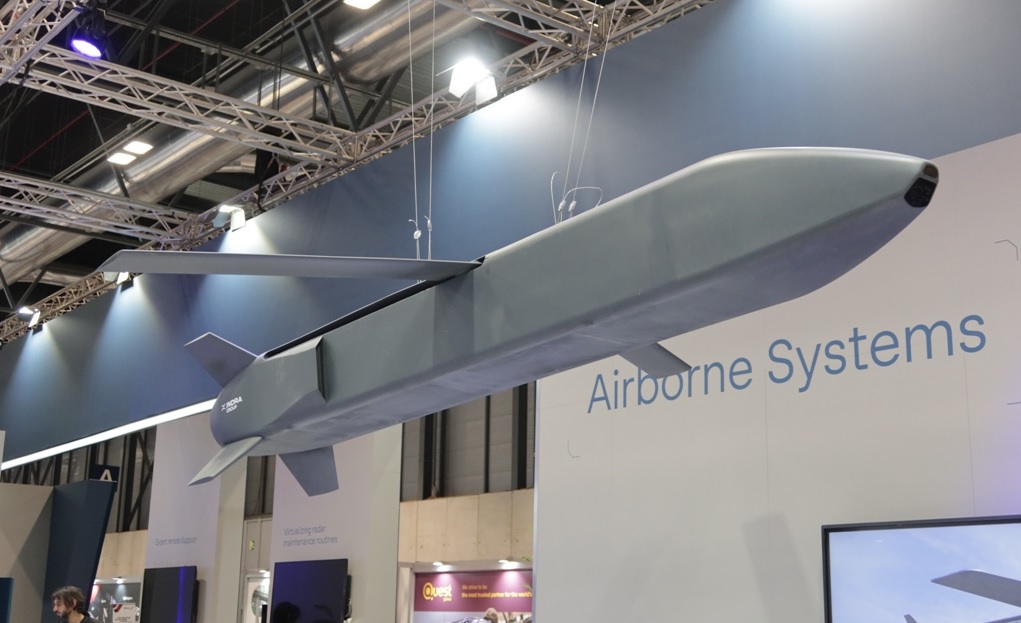
Spain’s INDRA Unveils 'VALERO' A New All-Spanish Light Remotely Operated Air Vehicle at FEINDEF 2025
World
At the prestigious FEINDEF 2025 defence exhibition in Madrid, Spanish technology company INDRA introduced an impressive new air system named VALERO, which stands for Vehículo Aéreo Ligero Español Remotamente Operado — meaning Light Spanish Remotely Operated Air Vehicle. This multipurpose unmanned air system is designed to support manned aircraft, reduce risks in combat zones, and enhance mission success rates. What makes VALERO special is that it’s a completely Spanish-developed system aimed at both current and future generations of fighter aircraft. What Is the VALERO System? The VALERO is not just a single drone but a full operational system made up of four key components: VAM (Vehículo Aéreo Multipropósito): The main air vehicle. LSC (Lanzador de Superficie Configurable): A flexible surface launcher system. EPC (Elemento de Planificación y Control): A planning and control system. Air Platform: Can be integrated with current Eurofighter Typhoons, F-18s, and in future, the European FCAS (Future Combat Air System). Design & Specifications of the VAM The VAM features a sleek, rectangular fuselage with foldable wings hinged towards the rear. Its compact design includes: Turbojet Engine: Mounted at the back with side air intakes. Foldable Wings: Designed to maintain a low sweep angle when extended. Payload Bay: Positioned at the front for electronic systems or warheads. Speed: Capable of reaching transonic speeds — at least Mach 0.8 at high altitudes and around 420 knots (778 km/h) at low level. Launch Compatibility: Sized to fit inside the internal weapon bays of both the F-35 and future FCAS aircraft. Payload Capacity: Around 250 kg, allowing for decoys, sensors, and combat payloads. The displayed model at FEINDEF wasn’t full-scale, but it accurately represented the shape and launch configuration. The Launcher and Control System The LSC (Surface Launcher) can carry up to four canisters, each loaded with a VAM. It’s adjustable, enabling launches from various terrains and angles. Initially, flight tests will be conducted from this surface launcher using a booster to quickly propel the VAM into flight, after which the turbojet will take over. The EPC (Planning and Control System) can be deployed either in a fixed building or a mobile shelter. It manages the drones through a secure data link with artificial intelligence assisting both onboard and at the control centre, ensuring fast decision-making in dynamic combat situations. Purpose and Future of VALERO Although the VALERO concept aligns well with the upcoming FCAS programme, INDRA clarified that it’s an independent Spanish initiative designed to meet the current needs of the Spanish Armed Forces while boosting Spain’s defence industry’s strategic autonomy. The first operational goal for VALERO is to act as an active dynamic decoy with a warhead, capable of simulating different aerial threats like enemy fighters, transport aircraft, or cruise missiles. This makes it useful for both defensive and offensive roles. A demo video shown at FEINDEF depicted swarms of VALERO drones operating alongside manned aircraft, performing complex coordinated tasks like electronic warfare, decoy missions, and simulated attacks — all managed via swarm AI and intra-drone communications. When Will It Be Ready? The first test flight for VALERO is planned for this summer (2025), launched from the surface-based LSC. INDRA has already finished the initial design reviews and aims to complete the Preliminary Design Review by the end of the year. The system is expected to become fully operational by 2029, well ahead of the future FCAS aircraft’s introduction. Why VALERO Matters VALERO represents a major step forward for Spain’s defence technology, being one of the first fully Spanish-developed unmanned air systems intended for both standalone operations and integration with manned fighters. Its versatility, speed, and modular design — along with swarm capabilities and artificial intelligence — put it on par with similar systems being developed in other European and NATO countries. This initiative not only strengthens Spain’s aerial warfare capabilities but also enhances its defence industry’s technological independence, opening the door for future collaborations and exports.
Read More → Posted on 2025-05-14 15:31:13Search
Top Trending
-
 Agneepath Scheme replaced with Sainik Samman Scheme 2024, Defence Minister Rajnath Singh Relaunched Agniveer Scheme
Agneepath Scheme replaced with Sainik Samman Scheme 2024, Defence Minister Rajnath Singh Relaunched Agniveer Scheme
-
 Death in Dhaka: CIA Links Surface After Putin Shielded Modi During SCO Meet
Death in Dhaka: CIA Links Surface After Putin Shielded Modi During SCO Meet
-
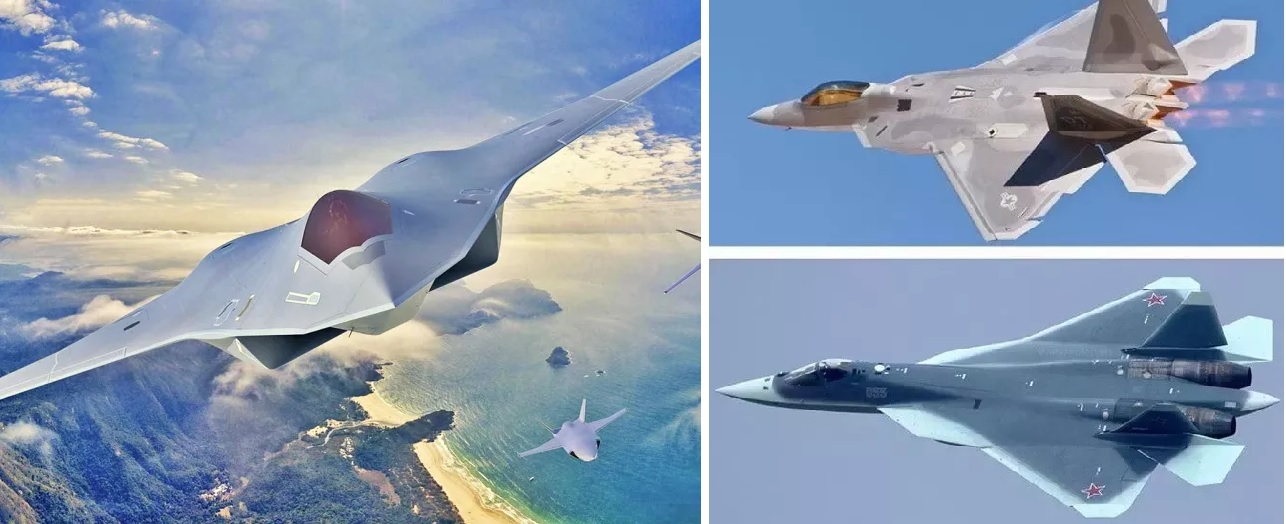 Key Differences Between 5th vs. 6th Generation Fighter Jets
Key Differences Between 5th vs. 6th Generation Fighter Jets
-
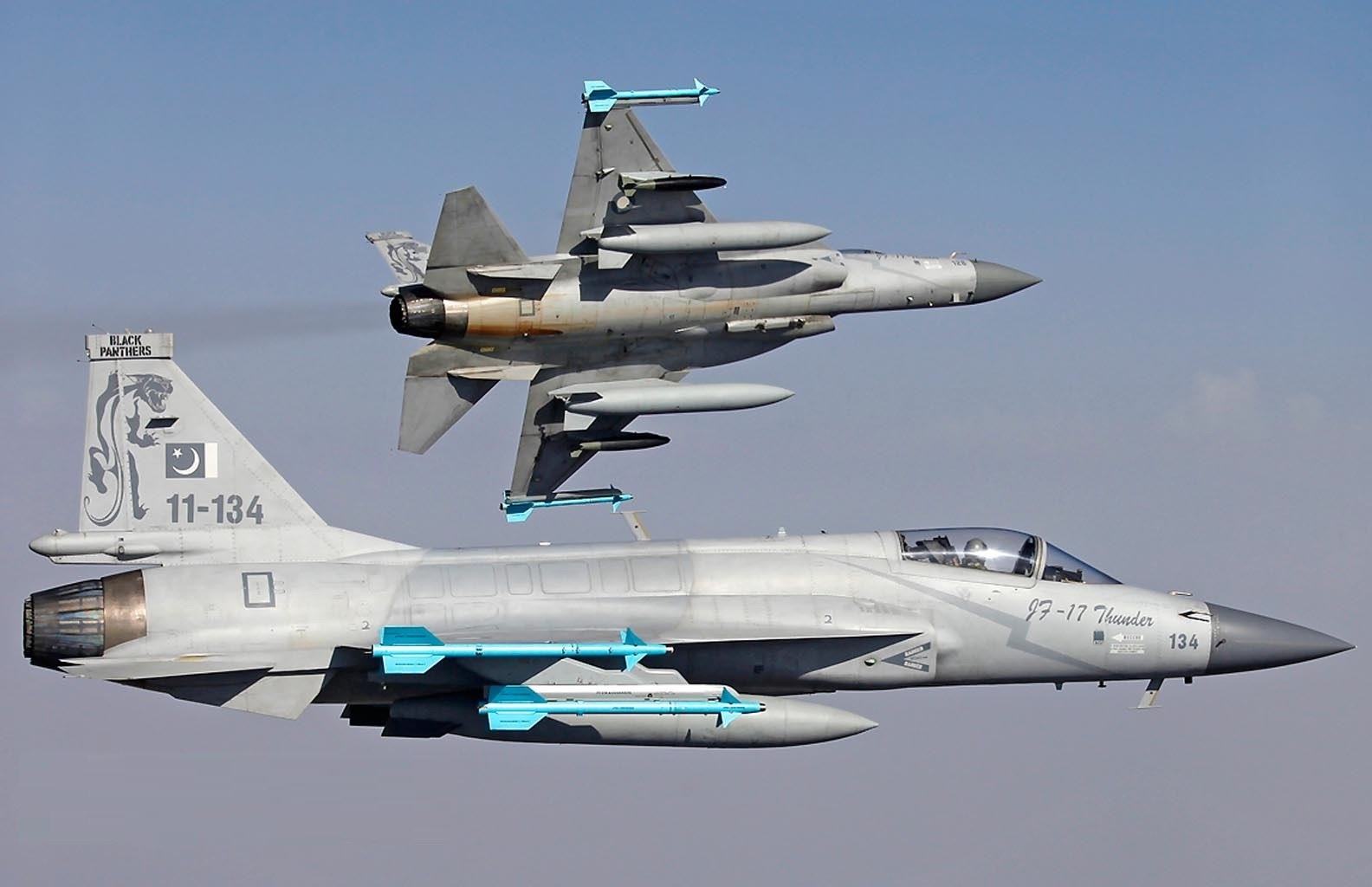 Pakistan Air Force to Unveil Stealth-Enhanced JF-17 Block 4 Fighter Jet by 2028
Pakistan Air Force to Unveil Stealth-Enhanced JF-17 Block 4 Fighter Jet by 2028
-
 India’s AMCA Engine Decision: Safran vs. Rolls-Royce Final Expected by 2025
India’s AMCA Engine Decision: Safran vs. Rolls-Royce Final Expected by 2025
-
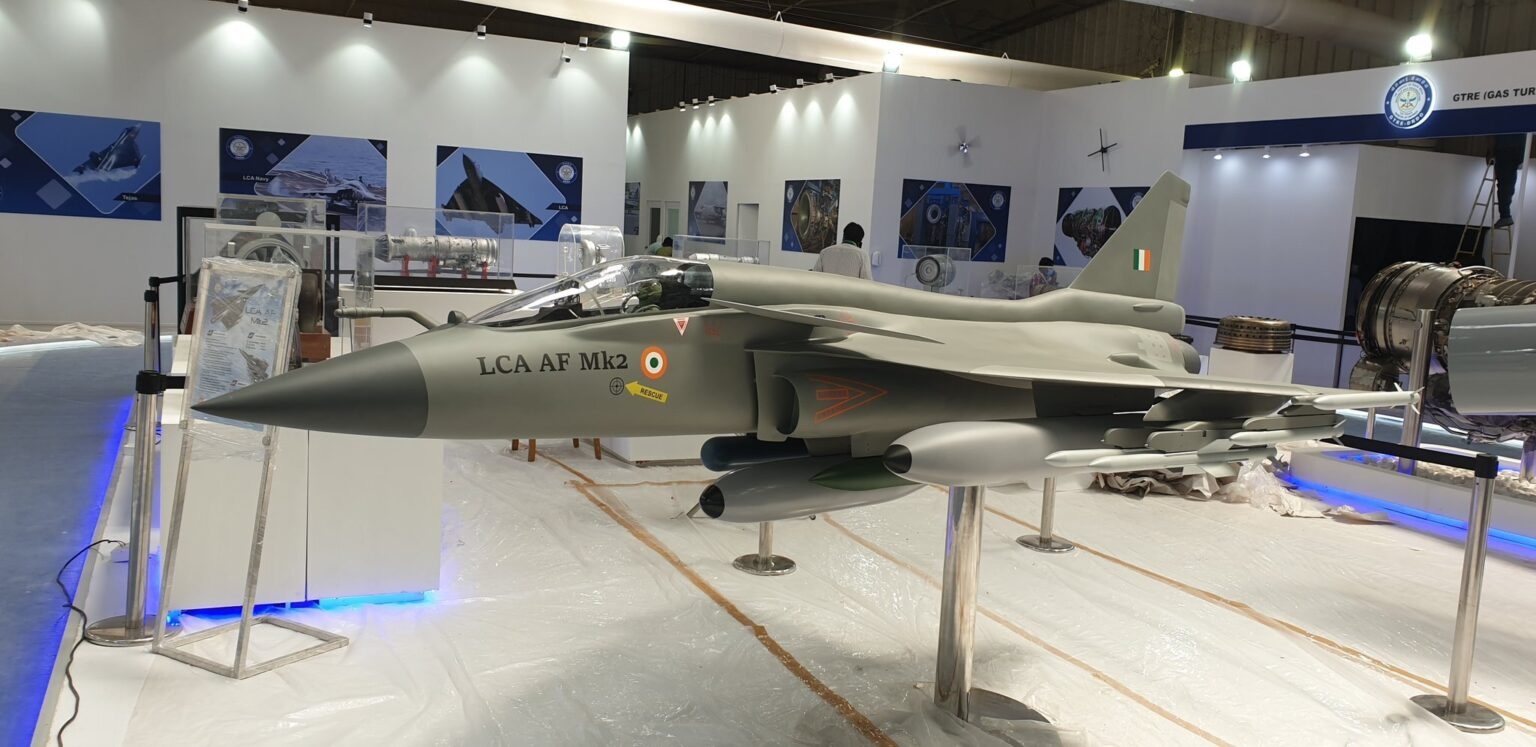 Tejas Mk2 Nears 2025 Rollout as HAL Ramps Up Final Assembly and System Integration
Tejas Mk2 Nears 2025 Rollout as HAL Ramps Up Final Assembly and System Integration
-
 Pakistan Announces 15% Increase in Defence Budget for 2024-25 Amid Economic Crisis
Pakistan Announces 15% Increase in Defence Budget for 2024-25 Amid Economic Crisis
-
 India's TEDBF Program Takes Shape First Flight by 2028: Aiming for Naval Supremacy with Advanced Stealth and Technology
India's TEDBF Program Takes Shape First Flight by 2028: Aiming for Naval Supremacy with Advanced Stealth and Technology
Top Trending in 4 Days
-
 Pakistan Army to Deploy Troops to Gaza by January 2026 Under Trump–Munir Deal, $500 Per Soldier
Pakistan Army to Deploy Troops to Gaza by January 2026 Under Trump–Munir Deal, $500 Per Soldier
-
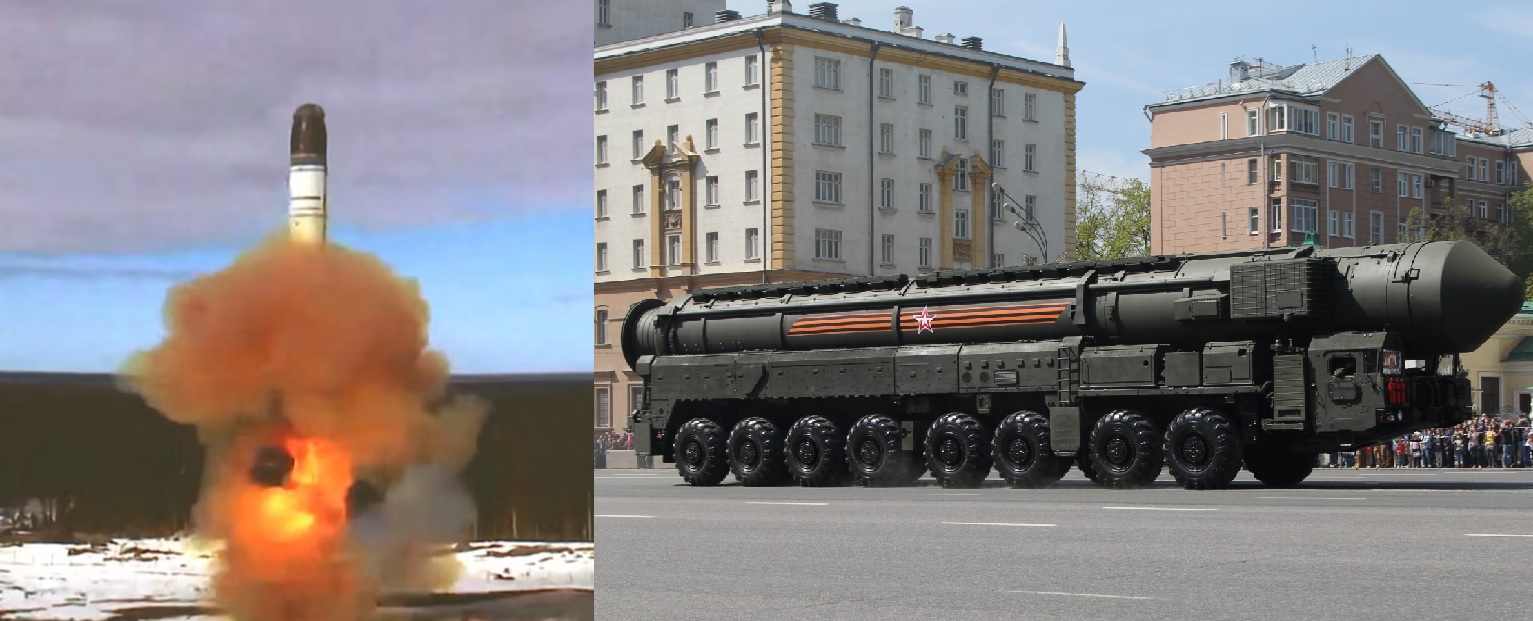 Russia Simulates Full-Scale Nuclear War in Siberia, Deploys Yars ICBMs on Combat Patrols
Russia Simulates Full-Scale Nuclear War in Siberia, Deploys Yars ICBMs on Combat Patrols
-
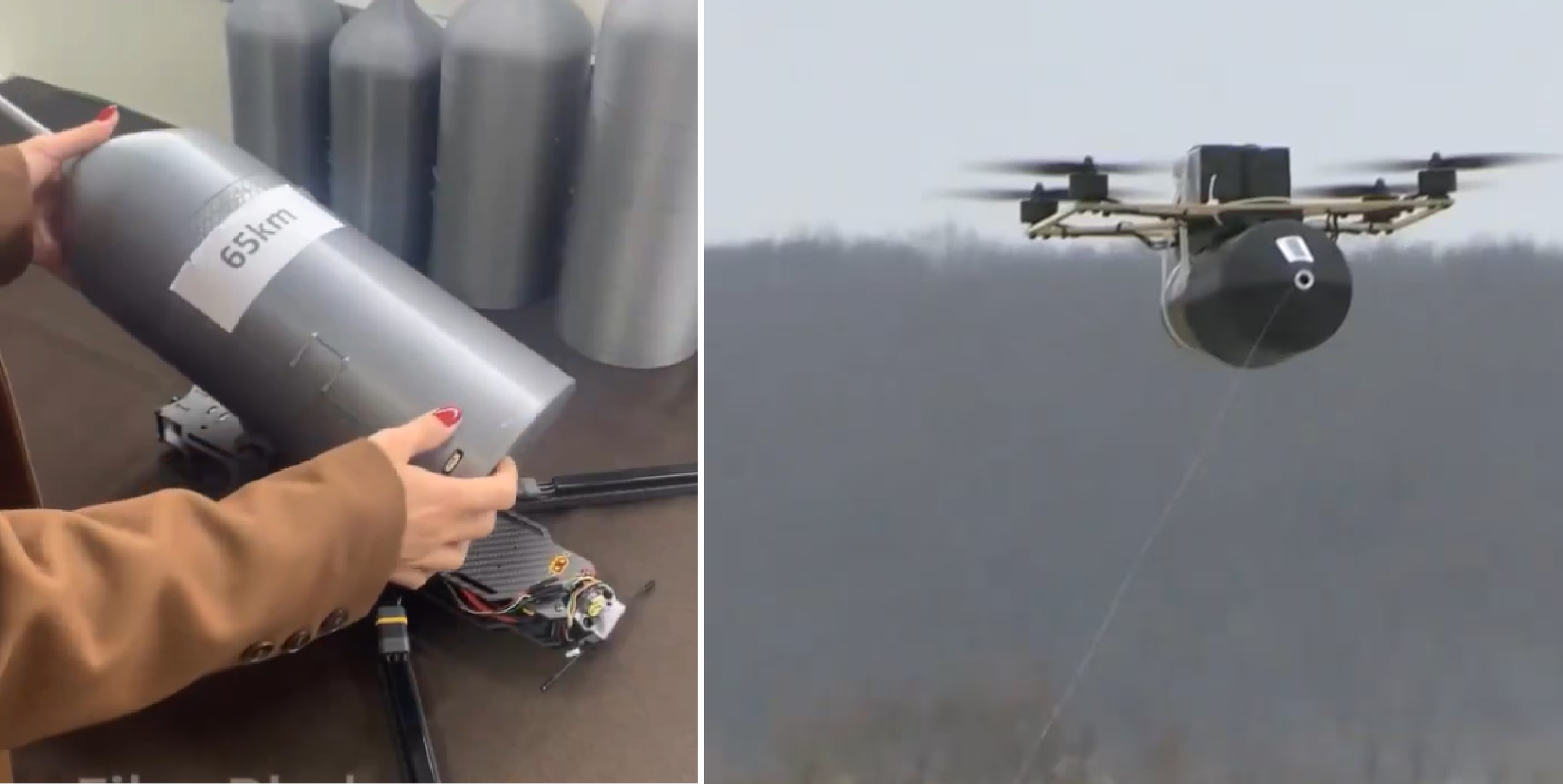 Russia Claims Test of 65-Kilometre Fiber-Optic FPV Drone Link
Russia Claims Test of 65-Kilometre Fiber-Optic FPV Drone Link
-
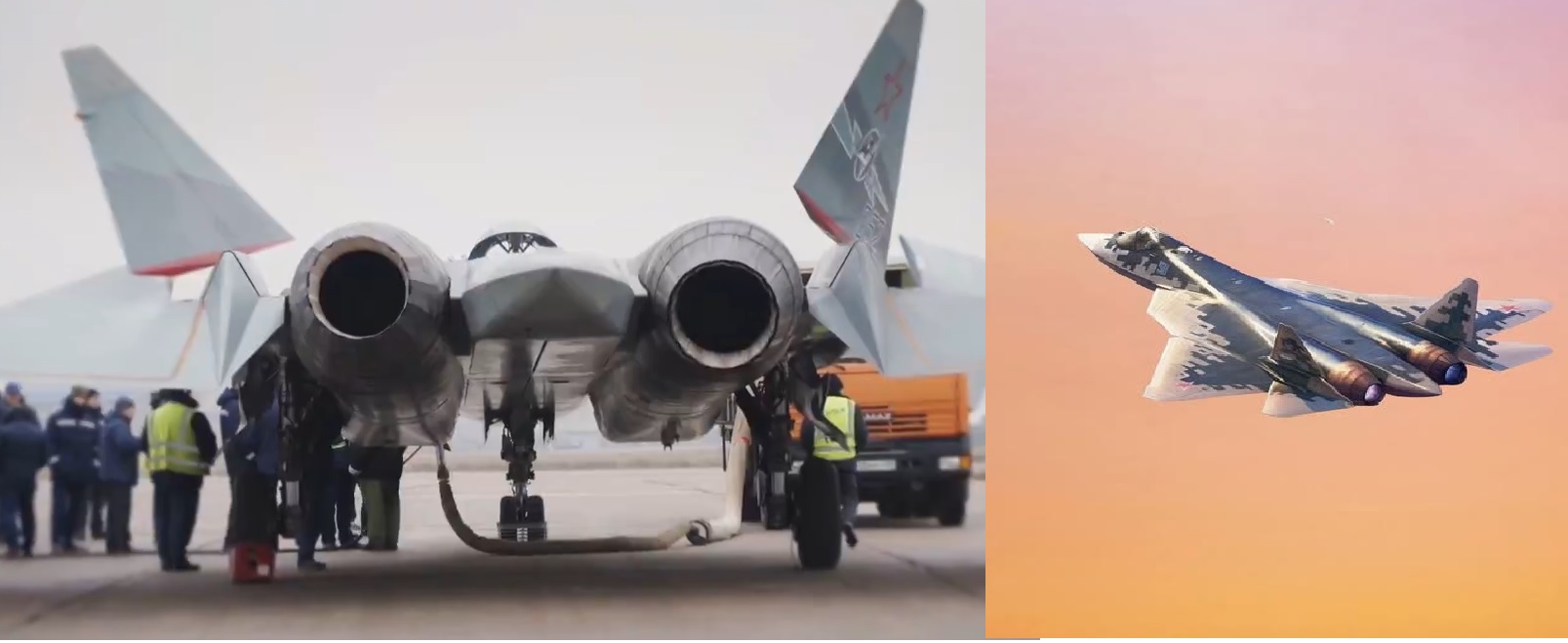 Russian Su-57 Conducts First Flight With Next-Generation Izdeliye-177 Engine
Russian Su-57 Conducts First Flight With Next-Generation Izdeliye-177 Engine
-
 Russian Strike on Mayaki Bridge Threatens Up to 60% of Ukraine’s Fuel Supply
Russian Strike on Mayaki Bridge Threatens Up to 60% of Ukraine’s Fuel Supply
-
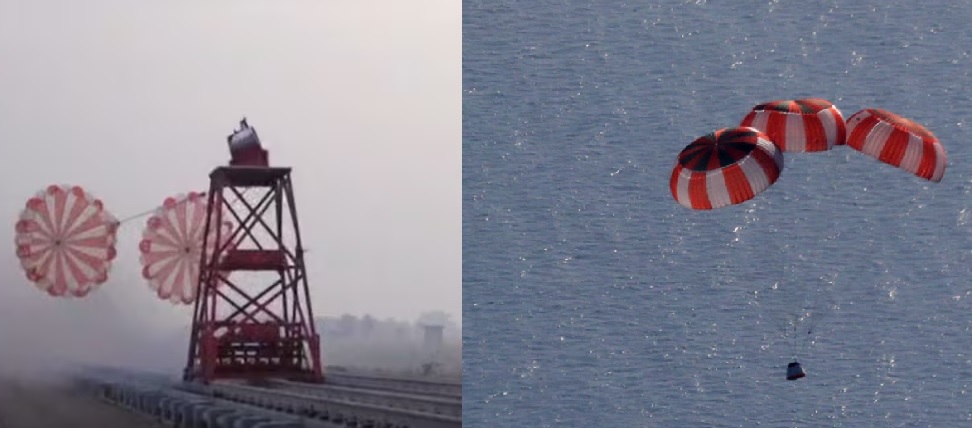 ISRO Successfully Qualifies Drogue Parachutes for Gaganyaan Crew Module
ISRO Successfully Qualifies Drogue Parachutes for Gaganyaan Crew Module
-
 U.S. Seizes China-Linked Oil Tanker Carrying Venezuelan Crude in International Waters
U.S. Seizes China-Linked Oil Tanker Carrying Venezuelan Crude in International Waters
-
 Indian Navy’s MARCOS Induct High-Tech ‘Hoverbee’ Kamikaze Drones for Stealth Operations
Indian Navy’s MARCOS Induct High-Tech ‘Hoverbee’ Kamikaze Drones for Stealth Operations



